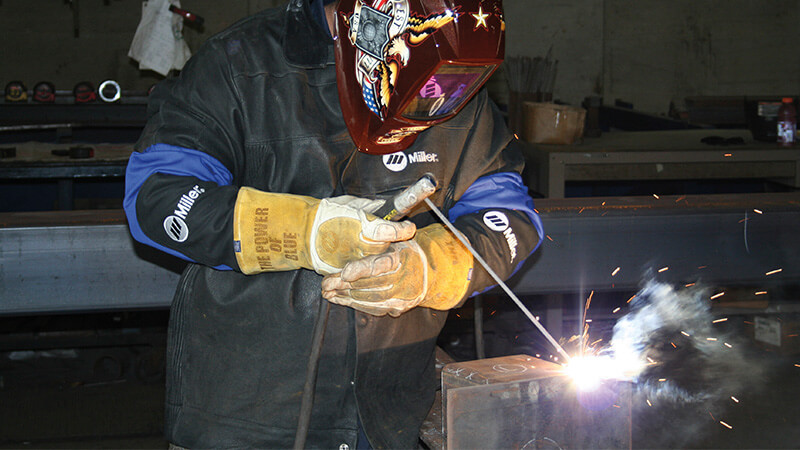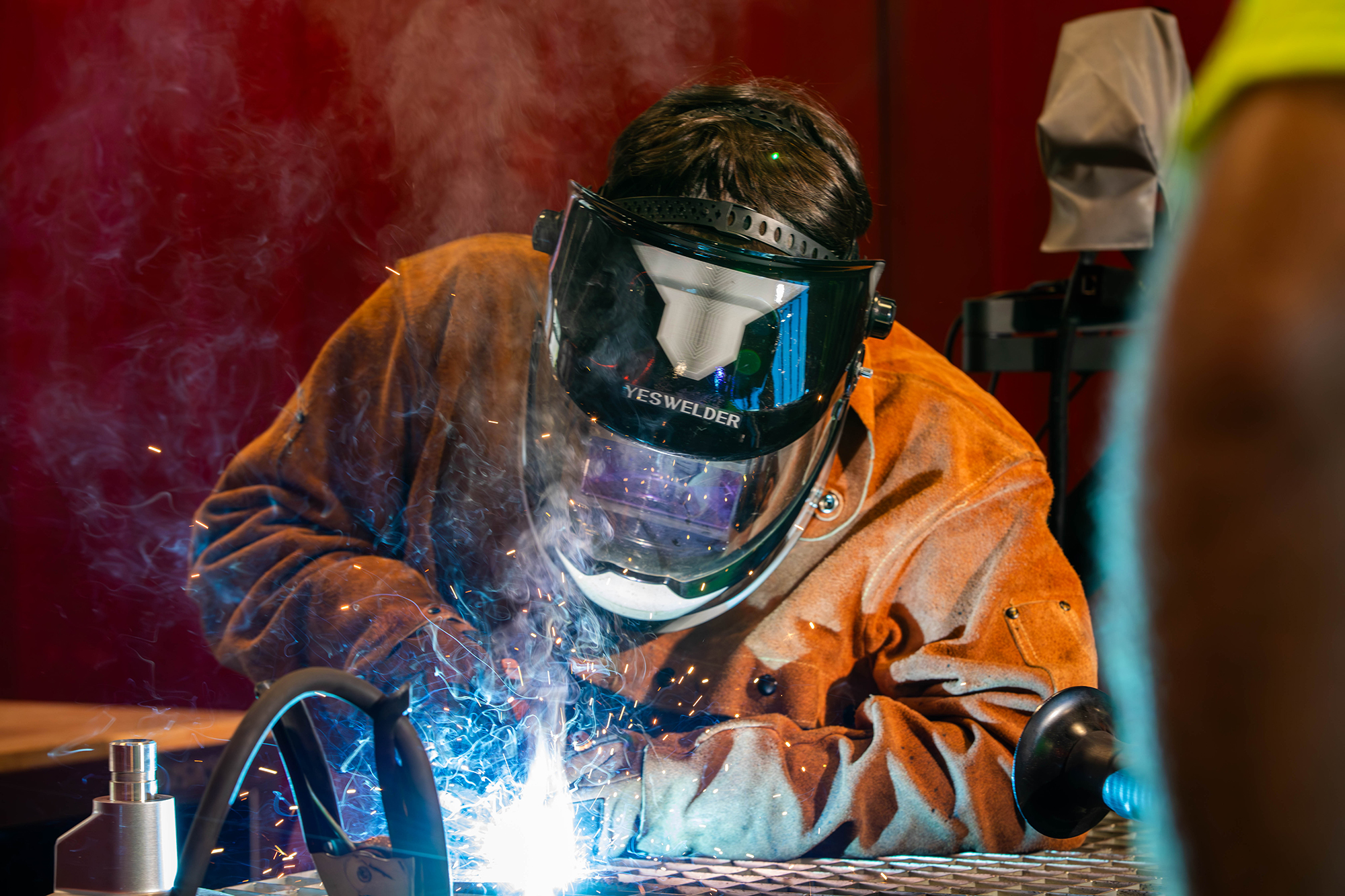A quick guide about overheating prevention from Montana Mobile Welding and Repair
Common Welding Repair Work Issues and How to Address Them Successfully
Welding repair work frequently encounter a series of problems that can endanger the integrity of the final item. Common problems include insufficient infiltration, porosity, and imbalance, among others. Each flaw offers distinct difficulties that require particular techniques for resolution. Understanding these problems is crucial for welders intending to enhance their skills and results. This conversation will discover these common welding repair problems and reliable approaches to address them.
Insufficient Penetration
Insufficient penetration occurs when the weld metal stops working to totally fuse with the base product, resulting in weak joints and prospective architectural failures. This issue often originates from insufficient warm input, inaccurate electrode angle, or improper welding speed. Welders may encounter inadequate penetration because of a mistake of the essential specifications for a particular material density or type. In addition, contamination on the base product's surface can prevent effective bonding, aggravating the trouble. To address poor penetration, welders ought to ensure ideal settings on their devices and keep a tidy job surface. Normal inspection of welds is advised to determine any shortages early, enabling prompt corrections and the prevention of endangered architectural stability in bonded assemblies.
Porosity
Porosity is a typical flaw in bonded joints that shows up as small gas bubbles trapped within the weld steel. This defect can compromise the integrity of the weld, causing minimized strength and prospective failure under stress and anxiety. Montana Mobile Welding and Repair Belgrade. Porosity typically occurs from contamination, wetness, or incorrect welding techniques, which enable gases to get away into the liquified weld pool. To address porosity, welders must guarantee correct surface area prep work, keep a clean functioning atmosphere, and use appropriate welding parameters. In addition, picking the best filler product and protecting gas can alleviate gas entrapment. Regular assessment and screening of welds can aid determine porosity early, ensuring prompt restorative actions are taken, consequently maintaining the quality and dependability of the welded structure
Misalignment
Imbalance in welding can emerge from numerous aspects, including improper setup and thermal development. Comprehending the source is necessary for efficient resolution. A number of modification methods are available to straighten parts and assure structural honesty.
Causes of Misalignment
Welding imbalance usually stems from a selection of underlying concerns that can endanger architectural honesty. One key reason is improper fit-up of parts prior to welding, which can bring about voids and unequal surfaces. Variants in thermal development throughout the welding procedure can likewise cause distortion, especially if the products being joined have different coefficients of development. In addition, poor securing and fixturing might stop working to hold components firmly in place, leading to movement during welding. Improperly maintained devices, including welding makers and tools, may introduce disparities in the weld bead, additional contributing to imbalance. Lastly, driver error, stemming from not enough training or experience, can also play a substantial role in developing misaligned welds.
Correction Methods Available
Dealing with misalignment successfully calls for a mix of corrective strategies tailored to the certain concerns handy. One common method is the use of jigs or fixtures to hold parts in the proper position throughout welding, ensuring consistent positioning. In addition, pre-heating the products can help decrease distortion and enhance fit-up. For significant imbalance, mechanical realignment techniques, such as using hydraulic jacks or clamps, can be utilized to correct the placement before welding. Post-weld warm therapy might likewise be required to relieve stress and anxieties brought on by misalignment. Lastly, mindful inspection and adjustment during the configuration stage can stop imbalance concerns from becoming considerable troubles, advertising a smoother welding procedure and boosting total architectural integrity.
Distortion
Distortion is a common difficulty in welding that can arise from numerous factors, consisting of unequal heating & cooling. Understanding the sources of distortion is crucial for implementing efficient avoidance strategies. Resolving this problem not only enhances structural stability but additionally boosts the overall quality of the weld.
Sources of Distortion
When subjected to the intense warm of welding, products commonly go through modifications that can bring about distortion. This phenomenon mainly occurs from thermal expansion and contraction throughout the welding process. As the weld location warms up, the material broadens; upon cooling, it acquires, which can develop internal stress and anxieties. Additionally, unequal heating throughout a workpiece can aggravate these tensions, resulting in bending or flexing. The sort of material also plays a significant function; metals with differing thermal conductivity and coefficients of expansion may respond in a different way, resulting in unforeseeable distortions. Moreover, poor joint style and insufficient fixturing can add to imbalance throughout welding, boosting the chance of distortion. Understanding these causes is necessary for efficient welding fixing and prevention techniques.
Avoidance Techniques
Effective prevention methods for distortion during welding focus on controlling warmth input and making sure appropriate joint layout. Maintaining a constant warmth input assists to decrease thermal growth and tightening, which can bring about distortion. Utilizing strategies such as pre-heating the work surface can additionally lower the temperature level gradient, advertising consistent heating. Furthermore, picking proper joint layouts, such as T-joints or lap joints, can enhance security and minimize stress and anxiety focus. Applying appropriate fixturing to protect the workpieces in place better aids in keeping alignment during the welding procedure. Staggered welding series can disperse warmth much more uniformly, avoiding localized distortion. By applying these methods, welders can significantly lower the likelihood of distortion and enhance the general top quality of their welds.
Cracking
Fracturing is a common issue come across in welding fixings, often resulting from numerous factors such as inappropriate air conditioning prices, material choice, or insufficient joint prep work. The occurrence of cracks can considerably jeopardize the honesty of the weld, causing possible failings during procedure. To resolve this problem, welders must initially analyze the root triggers, making sure that Read Full Article materials work and suitably chosen for the particular application. Furthermore, managing the air conditioning rate throughout the welding procedure is necessary; fast cooling can induce stress and anxiety and bring about splitting. Appropriate joint style and prep work also contribute to reducing the threat. Executing these methods can boost weld top quality and resilience, ultimately lowering the chance of cracking in completed weldments.

Insufficient Blend
A considerable concern in welding fixings is incomplete blend, which occurs when the weld metal does not adequately bond with the base product or previous weld passes - Belgrade Welding. This problem can cause weak points in the joint, possibly compromising the integrity of the welded structure. Factors adding to incomplete combination include not enough warm input, improper welding strategy, and contamination of the surface areas being joined. To address this concern successfully, welders need to guarantee correct pre-weld cleansing and surface area prep work, along with adjust their welding specifications to accomplish ample infiltration and blend. Normal examination throughout the welding procedure can also help identify insufficient fusion early, permitting for timely corrective steps to improve the general high quality of the weld
Overheating
While welding fixings can improve structural stability, overheating presents a significant challenge that can lead to product deterioration. Too much warm during welding can change the mechanical residential properties of metals, resulting in reduced stamina, increased brittleness, and bending. This phenomenon is particularly crucial in high-stress applications where structural dependability is critical. Identifying best site overheating can involve visual examinations for discoloration or distortion, as well as monitoring temperature level during the welding process. To reduce the risks connected with getting too hot, welders should utilize proper strategies, such as managing warmth input, readjusting travel speed, and utilizing appropriate filler materials. Furthermore, carrying out pre- and post-weld warm treatments can aid restore material homes and improve the general quality of the repair work, ensuring long-lasting efficiency and safety.
Frequently Asked Questions
What Are the Common Indicators of a Welding Problem?

Just How Can I Test My Welds for Top quality?
To examine welds for top quality, one can utilize visual inspections, ultrasonic screening, and radiographic methods. Each strategy ensures architectural honesty, identifies defects, and verifies adherence to defined standards, ultimately boosting the integrity of the bonded joints.
What Safety Precautions Should I Take While Welding?
When welding, one must prioritize safety by putting on appropriate personal protective devices, ensuring appropriate air flow, securing flammable materials away, keeping a clean work space, and understanding surroundings to protect against injuries and mishaps.
Can I Repair a Weld Without Redesigning the Entire Joint?
Repairing a weld without redesigning the entire joint is feasible, depending upon the damage (Fabrication). Methods such as grinding, adding filler product, or using a welding procedure can properly attend to particular flaws while maintaining the surrounding structure
What Devices Are Vital for Effective Welding Services?
Crucial tools for effective welding fixings consist of a welding device, top article cord brush, grinder, protective equipment, clamps, and filler materials. Each device plays a vital function in making sure quality and security throughout the repair procedure. Porosity typically develops from contamination, wetness, or inappropriate welding strategies, which enable gases to run away right into the molten weld swimming pool. Poorly maintained equipment, including welding equipments and devices, might present inconsistencies in the weld bead, additional contributing to imbalance. When subjected to the intense warmth of welding, materials frequently go through adjustments that can lead to distortion. Breaking is an usual problem experienced in welding repair work, usually resulting from various factors such as inappropriate cooling rates, material choice, or insufficient joint preparation. A significant problem in welding repairs is insufficient combination, which takes place when the weld steel does not properly bond with the base material or previous weld passes.